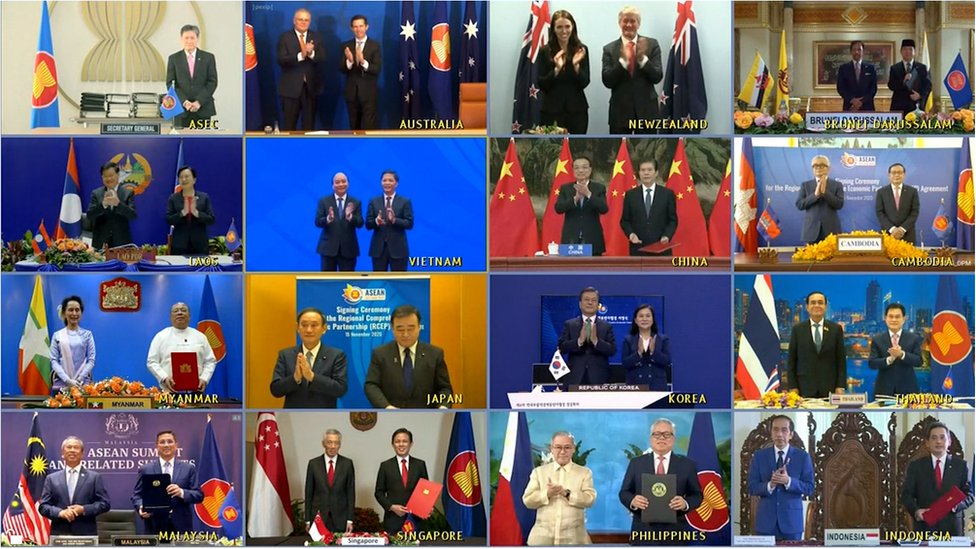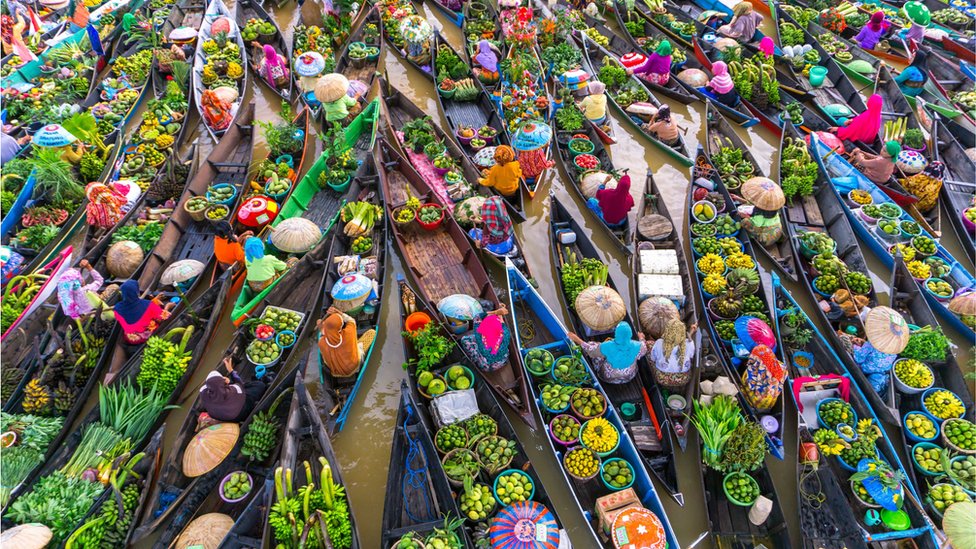15 COUNTRIES SIGN WORLD’S LARGEST TRADING BLOC
RCEP: Asia-Pacific countries form world’s largest trading bloc
Fifteen countries have formed the world’s largest trading bloc, covering nearly a third of the global economy.
The Regional Comprehensive Economic Partnership (RCEP) is made up of 10 Southeast Asian countries, as well as South Korea, China, Japan, Australia and New Zealand.
The pact is seen as an extension of China’s influence in the region.
The deal excludes the US, which withdrew from a rival Asia-Pacific trade pact in 2017.
President Donald Trump pulled his country out of the Trans-Pacific Partnership (TPP) shortly after taking office.
Negotiations over the new RCEP deal began in 2012 and it was finally signed on Sunday on the sidelines of a meeting of the Association of Southeast Asian Nations (Asean).
Why is it important?
The RCEP isn’t as comprehensive and doesn’t cut tariffs as deeply as the TPP’s successor. But many analysts think RCEP’s sheer size makes it more significant.
“Its membership includes a larger group of nations, notably reflecting the membership of China, which considerably boosts the total Gross Domestic Product (GDP) of RCEP members,” according to Rajiv Biswas, Asia Pacific chief economist for analyst firm IHS Markit.
While China already has a number of bilateral trade agreements, this is the first time it has signed up to a regional multilateral trade pact.

Why do members want this deal?
For starters, leaders hope that the pact will help to spur recovery from the coronavirus pandemic.
“Under the current global circumstances, the fact the RCEP has been signed after eight years of negotiations brings a ray of light and hope amid the clouds,” said Chinese Premier Li Keqiang.
Longer-term, Mr Li described the agreement as “a victory of multilateralism and free trade”.
India was also part of the negotiations, but it pulled out last year over concerns that lower tariffs could hurt local producers.
Signatories of the deal said the door remained open for India to join in the future.
Members of the RCEP make up nearly a third of the world’s population and account for 29% of global gross domestic product.
The new free trade bloc will be bigger than both the US-Mexico-Canada Agreement and the European Union.

What will RCEP do?
By Tim McDonald, BBC News, Singapore
The RCEP is expected to eliminate a range of tariffs on imports within 20 years.
It also includes provisions on intellectual property, telecommunications, financial services, e-commerce and professional services.
But it’s possible the new “rules of origin” – which officially define where a product comes from – will have the biggest impact.
Already many member states have free trade agreements (FTA) with each other, but there are limitations.
“The existing FTAs can be very complicated to use compared to RCEP,” said Deborah Elms from the Asian Trade Centre.
Businesses with global supply chains might face tariffs even within an FTA because their products contain components that are made elsewhere.
A product made in Indonesia that contains Australian parts, for example, might face tariffs elsewhere in the Asean free trade zone.
Under RCEP, parts from any member nation would be treated equally, which might give companies in RCEP countries an incentive to look within the trade region for suppliers.

Who is likely to benefit?
The Peterson Institute for International Economics estimates the deal could increase global national income by $186bn annually by 2030 and add 0.2% to the economy of its member states.
However, some analysts think the deal is likely to benefit China, Japan and South Korea more than other member states.
“The economic benefits of the deal might only be marginal for South East Asia, but there are some interesting trade and tariff dynamics to watch for North East Asia,” said Nick Marro at the Economist Intelligence Unit (EIU).
But it could be some time before any country sees the benefits, because six Asean nations and three other nations have to ratify it before it takes effect. Mr Marro thinks it could be a slow process.
“Ratification will likely be tricky in national parliaments, owing to both anti-trade and anti-China sentiment,” he added.




